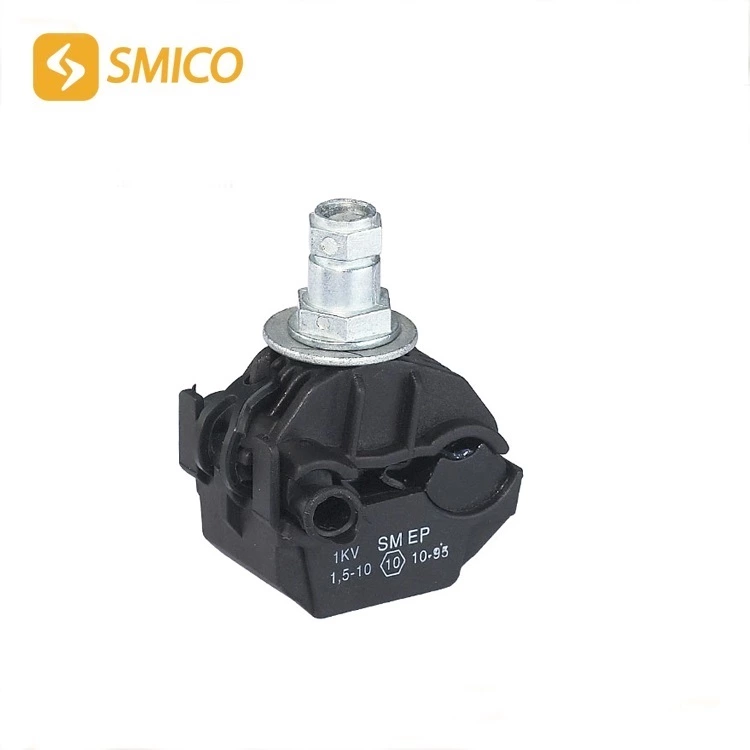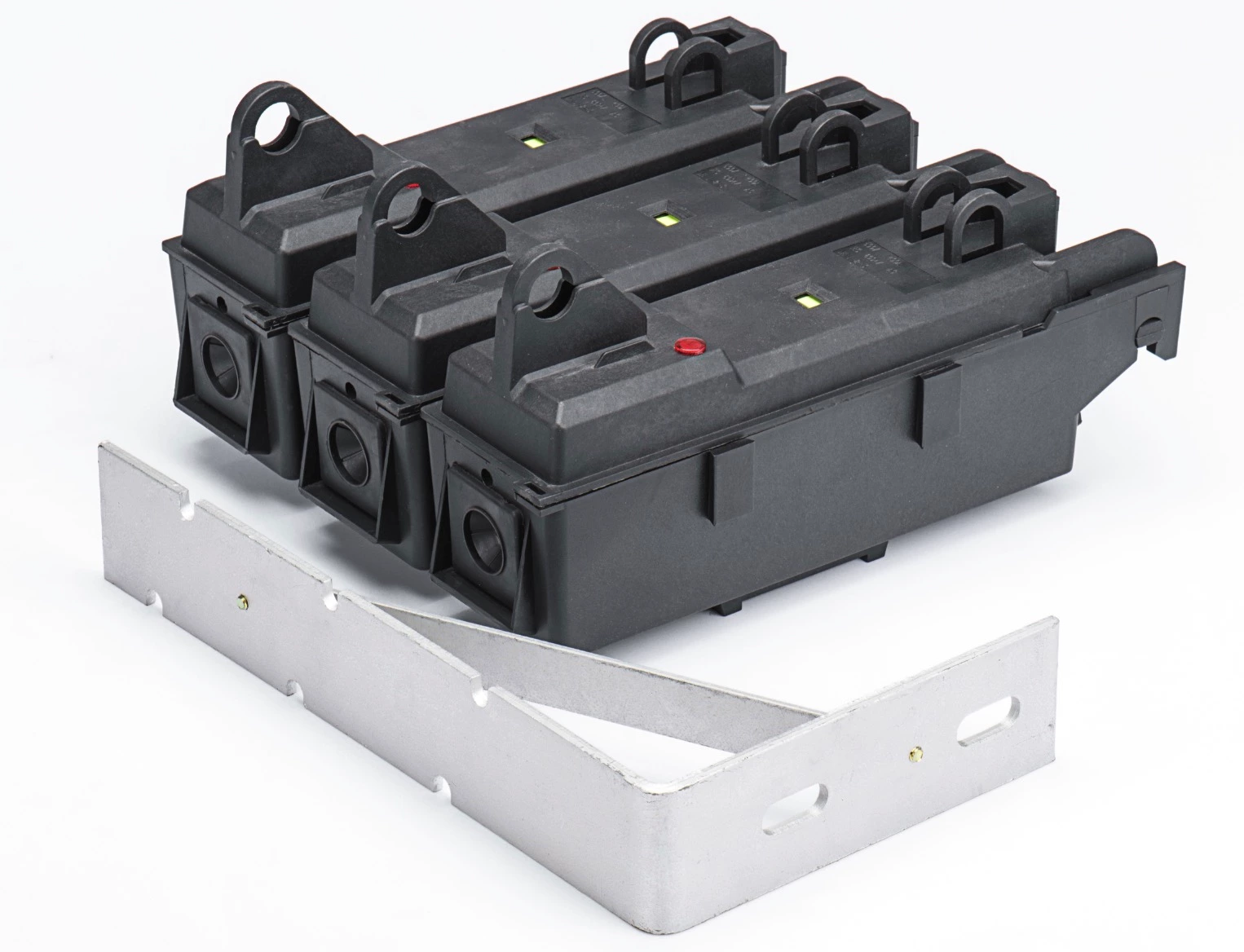Copper Bonded Ground Rods
WHAT ARE EARTH RODS?
Earth rods and their fittings are used to provide the interface to ground in all soil conditions in order to achieve satisfactory earthing systems in overhead and underground electricity distribution and transmission networks – providing high fault current capacity on low, medium and high voltage substations, towers and power distribution applications.
Convenient to install where the subsoil condition is free from rock and boulders the earth rod or group of copper bonded rods can be surrounded or backfilled using a low resistance earthing material such as Bentonite.
Depending on the corrosive condition and electrical conductivity of the ground condition the earth rod can be specified to achieve safe, reliable and long term earthing protection – the mechanical strength of the rod must withstand the abrasion and stress endured while installing with an electric or pneumatic driving rod hammer; the head of the earth rod should not “mushroom” or spread when driven.
The earth rods, manufactured by SMICO, are extendable by design and used with copper couplers to inter-connect several rods to achieve the required driving depth – the rod couplers provide permanent electrical conductivity and the longer copper earth rods access lower resistivity soils at at lower depths.
Vertically driven earth rods are the most effective electrode for use in typically small area substations or when low soil resistivity ground conditions, into which the rod can where the rod can penetrate, lies beneath a layer of high soil resistivity.
Earth Rods Diameter v Length
A common misconception is that there is a direct and positive correlation between the diameter of earth rod used and the effect on lowering earth resistance readings. Incorrect.
The graph below confirms that the resistance value is only lowered by 9.5% by doubling the diameter of the rod (which means increasing the weight and the cost of the rod by approximately 400%). Thus the rationale is: use the most economical earth rod that soil conditions will permit the installer to drive.
Rule of thumb – doubling the radius of the earth rod will reduce resistance by approximately 10% and is not a cost-effective option. Doubling the rod length however will theoretically reduce resistance by 40%.
Where additional driven earth rods are combined and connected they should be separated from each other and from any adjacent cables by a distance not less than the depth to which they are driven. Additional earth rods should be connected using copper tape or bare copper cable of the same cross sectional area as the earth electrode conductor. The additional electrodes should be placed so that any necessary separation of the LV and HV earth electrode systems is maintained.
EARTH ROD TYPES
- Stainless Steel Earth Rods
- Galvanised Steel Earth Rods
- Copperbond Threaded Earth Rods
- Solid Copper Earth Rods
Copper is the optimal choice of earth electrode material and underground conductor – solid copper is recommended for high fault current installations whereas copper bonded rods are usually installed for smaller sections.
Copperbonded steel core earth rods are the most specified due to electrical and mechanical strength, resistance to corrosion as comparatively lower cost compared to solid copper or stainless steel types – the lowest cost galvanised rods for usually installed non-critical, short-term or temporary earthing requirements.
| Type of Earth Rod | Features & Benefits |
| Copperbond | Optimum Economic Efficiency * High Corrosion Resistant * Very High Tensile Strength * Extendable |
| Solid Copper | Excellent Corrosion Resistance * Aggressive Soil Applications (eg high salt) * Extendable |
| Stainless Steel | Maximum Corrosion Resistance * Resist Galvanic Corrosion * Highest Material Cost * High Life Expectancy |
| Galvanised Steel | Lowest Electrical Conductivity * Lowest Cost * Lowest Corrosion Resistance * Poor Current Carrying Capacity |
SOLID OR BONDED COPPER RODS
Steel cored copperbond earthing rods are manufactured by molecularly bonding 99.9% pure electrolytic copper onto a low carbon steel core – copperbonded steel rods provide high mechanical tensile strength and corrosion resistance at comparatively lower cost than solid copper or stainless steel rods with a higher corrosion resistance typically for high salt and high resistivity soil condition earthing applications.
Copper bonded rods and electrodes are suitable for deep driving into most ground conditions and provide a low resistance path to ground. Soil resistivity tests should be conducted prior to installing the earth rods to ensure acceptable soil resistivity readings – to reduce resistivity additional rods can be driven into the ground to increase density.
Earth rods manufactured from stainless steel are installed to prevent galvanic corrosion which occurs between buried dissimilar metals in close proximity
| Earth Rods – Copperbond Type (Threaded) – Selection Table | |||||||
| Order Code | Earth Rod Diameter | Length | Thread Size (UNC-2A) | Shank (D) | Length 1 | Unit Weight | Pack Quantity |
| ERB 412 | 1/2″ | 1200mm | 9/16″ | 12.7mm | 30mm | 1.18kg | 5 |
| ERB 415 | 1500mm | 1.55kg | 5 | ||||
| ERB 418 | 1800mm | 1.76kg | 5 | ||||
| ERB 424 | 2400mm | 2.36kg | 5 | ||||
| ERB 112 | 5/8″ | 1200mm | 5/8″ | 14.2mm | 30mm | 1.53kg | 5 |
| ERB 115 | 1500mm | 1.88kg | 5 | ||||
| ERB 118 | 1800mm | 2.29kg | 5 | ||||
| ERB 124 | 2400mm | 3.00kg | 5 | ||||
| ERB 130 | 3000mm | 3.79kg | 5 | ||||
| ERB 212 | 3/4″ | 1200mm | 3/4″ | 17.2mm | 35mm | 2.19kg | 5 |
| ERB 215 | 1500mm | 2.73kg | 5 | ||||
| ERB 218 | 1800mm | 3.27kg | 5 | ||||
| ERB 224 | 2400mm | 4.35kg | 5 | ||||
| ERB 230 | 3000mm | 5.44kg | 5 | ||||
INSTALLATION OF EARTH RODS
Earth rod electrodes are installed during the civil engineering works associated with substation construction – soil resistivity readings are taken and if “greater than 200Ωm (i.e. in arrears where the soil is made up primarily of slate, shale or rock)”ƒ, vertical earth rods are installed to reduce resistance. Note consult local UK DNO or utility recommendations which vary according to engineering standards and preferences.
Soil Resistivity & Earth Rod Selection
The soil model and ground conditions are essential to an effective earthing system design where the soil resistivity values determine the type and length of earth rods required. When confronted by a difficult earthing design the standard approach is to supplement the bill of materials with additional conductors and earth rods – this is not always beneficial as costs can be expensive and rods in proximity to each other have reduced effectiveness.
The corrosive effects of soil types – the factors associated with the corrosion of metals in contact with the soil that should be considered are: the chemical nature of the soil (acidity/salt content), differential aeration and the presence of anaerobic bacteria. Following is a list of aggressive soils in increasing order of aggressiveness:
- Gravel Soils
- Sandy Soils
- Silty Soils (loam)
- Clays
- Peat & Organic Soils





